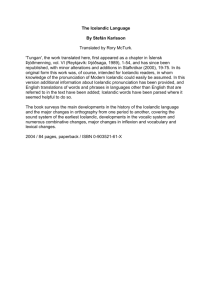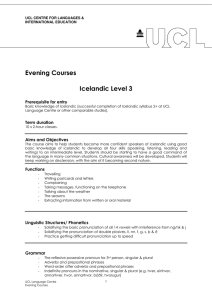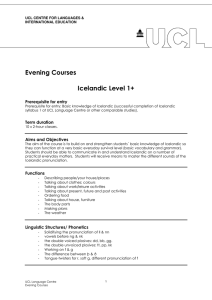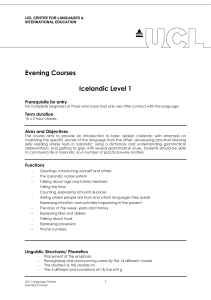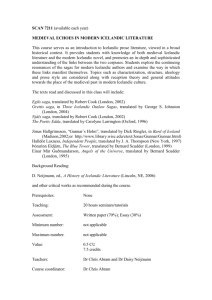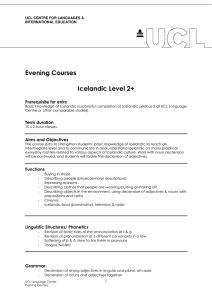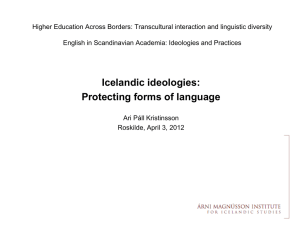Well-being, social interaction and participation in leisure
advertisement
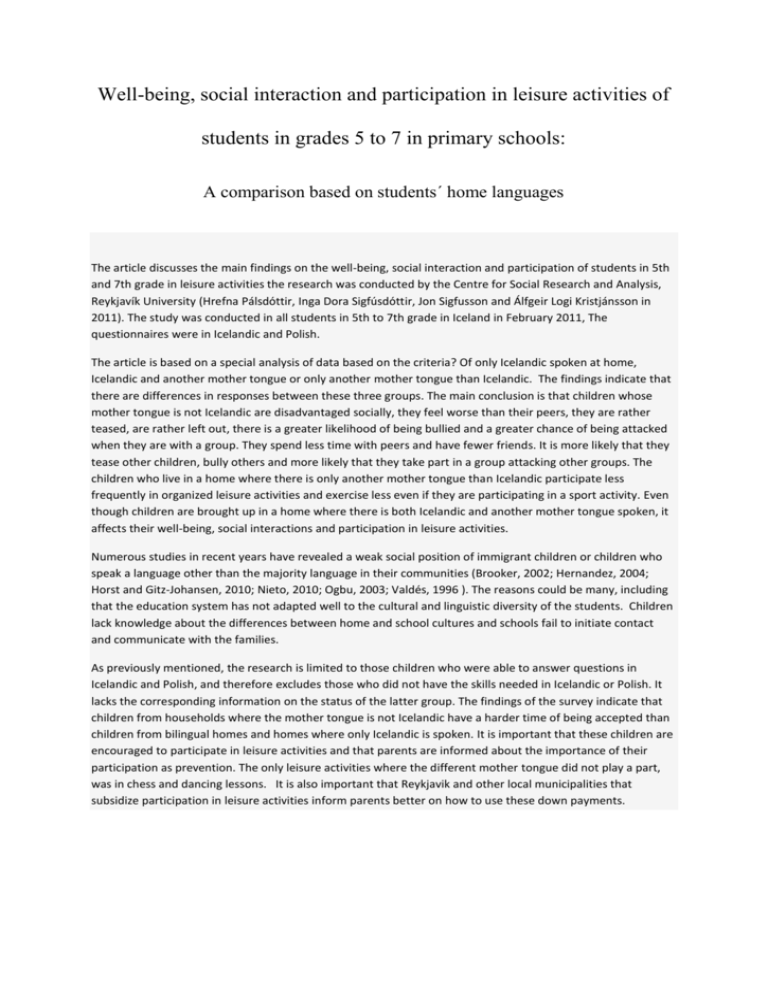
Well-being, social interaction and participation in leisure activities of students in grades 5 to 7 in primary schools: A comparison based on students´ home languages The article discusses the main findings on the well-being, social interaction and participation of students in 5th and 7th grade in leisure activities the research was conducted by the Centre for Social Research and Analysis, Reykjavík University (Hrefna Pálsdóttir, Inga Dora Sigfúsdóttir, Jon Sigfusson and Álfgeir Logi Kristjánsson in 2011). The study was conducted in all students in 5th to 7th grade in Iceland in February 2011, The questionnaires were in Icelandic and Polish. The article is based on a special analysis of data based on the criteria? Of only Icelandic spoken at home, Icelandic and another mother tongue or only another mother tongue than Icelandic. The findings indicate that there are differences in responses between these three groups. The main conclusion is that children whose mother tongue is not Icelandic are disadvantaged socially, they feel worse than their peers, they are rather teased, are rather left out, there is a greater likelihood of being bullied and a greater chance of being attacked when they are with a group. They spend less time with peers and have fewer friends. It is more likely that they tease other children, bully others and more likely that they take part in a group attacking other groups. The children who live in a home where there is only another mother tongue than Icelandic participate less frequently in organized leisure activities and exercise less even if they are participating in a sport activity. Even though children are brought up in a home where there is both Icelandic and another mother tongue spoken, it affects their well-being, social interactions and participation in leisure activities. Numerous studies in recent years have revealed a weak social position of immigrant children or children who speak a language other than the majority language in their communities (Brooker, 2002; Hernandez, 2004; Horst and Gitz-Johansen, 2010; Nieto, 2010; Ogbu, 2003; Valdés, 1996 ). The reasons could be many, including that the education system has not adapted well to the cultural and linguistic diversity of the students. Children lack knowledge about the differences between home and school cultures and schools fail to initiate contact and communicate with the families. As previously mentioned, the research is limited to those children who were able to answer questions in Icelandic and Polish, and therefore excludes those who did not have the skills needed in Icelandic or Polish. It lacks the corresponding information on the status of the latter group. The findings of the survey indicate that children from households where the mother tongue is not Icelandic have a harder time of being accepted than children from bilingual homes and homes where only Icelandic is spoken. It is important that these children are encouraged to participate in leisure activities and that parents are informed about the importance of their participation as prevention. The only leisure activities where the different mother tongue did not play a part, was in chess and dancing lessons. It is also important that Reykjavik and other local municipalities that subsidize participation in leisure activities inform parents better on how to use these down payments.
